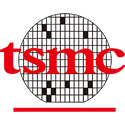
Kioxia Adopted for NEDO Project to Develop Manufacturing Technology for Innovative Memory Under Post-5G System Infrastructure Project
Kioxia Corporation, a world leader in memory solutions, today announced that it has been adopted by Japan's national research and development agency, New Energy and Industrial Technology Development Organization (NEDO), for its groundbreaking proposal on the Development of Manufacturing Technology for Innovative Memory to enhance the post-5G information and communication system infrastructure.
In the post-5G information and communication era, AI is estimated to generate an unprecedented volume of data. This surge will likely escalate the data processing demands of data centers and increase power consumption. To address this, it is crucial that the next-generation memories facilitate rapid data transfer with high-performance processors while increasing capacity and reducing power consumption.
In the post-5G information and communication era, AI is estimated to generate an unprecedented volume of data. This surge will likely escalate the data processing demands of data centers and increase power consumption. To address this, it is crucial that the next-generation memories facilitate rapid data transfer with high-performance processors while increasing capacity and reducing power consumption.





























































